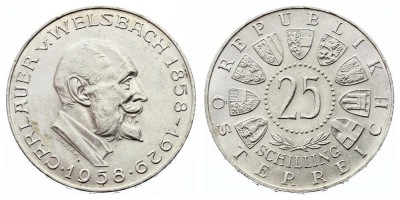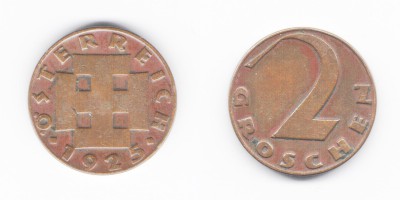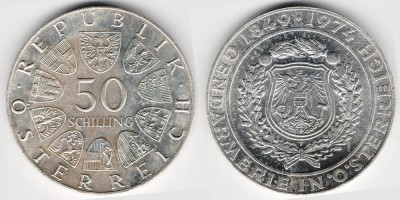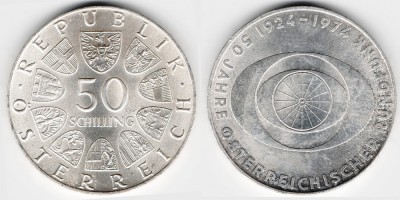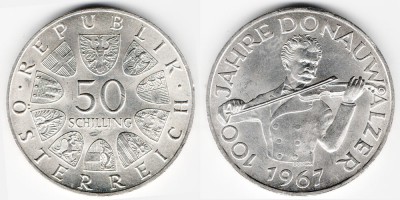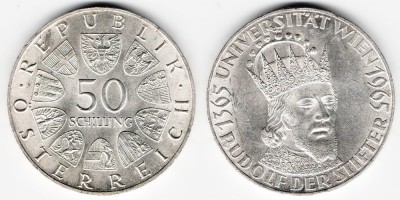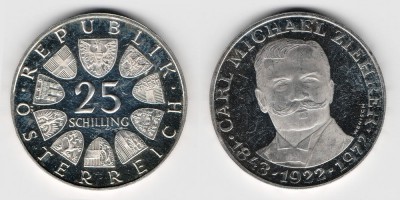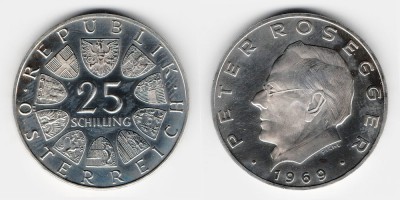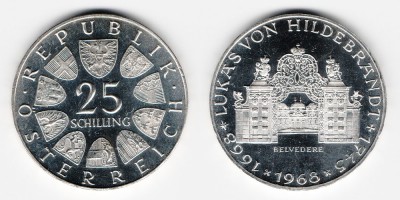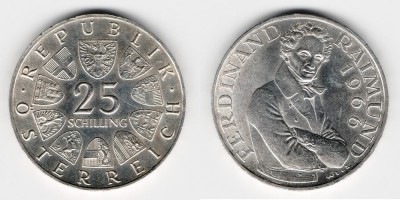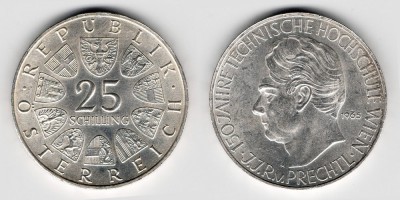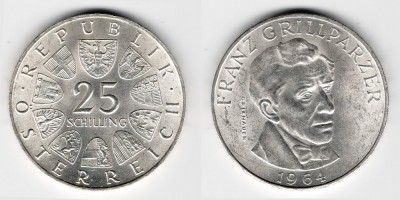Country: Austria, Republic Of Austria
Capital: Vienna
National currency: Euro
Numeric code: 040
Letter code: AUT
Austria located in Central Europe on the banks of the Danube, and in the old days the Germans called these lands "the East country" (Ostarrichi) – so appeared its modern name.
For centuries Austria had a different currency that are represented by individual coins in coins Austria.
• 1612-1914 – Austrian Ducat. Speaking of the value of the coins of Austria, it should be noted that in the Austrian Ducat was the highest gold content of European coins that were in circulation. Minting ducats continues to the present time (as collector coins) – and all date is 1915;
• 1740-1858 Taler;
• 1858-1892 Austrian Guilder;
• 1892-1918 Austro-Hungarian Krone ("crown");
• 1919-25 Austrian Krone;
• 1925-38 Austrian Schilling;
• 1938-45 German REICHSMARK;
• 1945-2001 Austrian Schilling;
• 1 Jan 2002 – Euro (1, 2, 5, 10, 20 and 50 cents; 1 and 2 euros).
You can buy Austria coins of different denominations and categories.
In Austria the national side of the Euro presents Alpine flowers, monuments and portraits of great citizens. Small coins:
• 1 eurocent - gentian;
• 2 cents - veys;
• 5 cents - primrose.
On the coins of 10, 20 and 50 cents depicts St. Stephen's Cathedral, Belvedere Palace (the Imperial residence, now art Museum) and the Vienna secession (Vienna workshops of artists in the 19th century).
On coins 1 and 2 Euro immortalized the great Austrians such as Mozart and Bertha von Suttner (writer and leader of the movement for peace) the price of the coins of Austria depends on the category of coins (regular, commemorative, collector).
The commemorative coins are issued in € 2 and is dedicated to the anniversaries of important events in European history. Also a very interesting collection of coins of gold and silver. For example, the series "Vienna Philharmonic" (with musical instruments), "Crowns of the house of Habsburg", "Klimt and his women" (with fragments of his paintings in gold and silver), "Myths and legends of Austria" (with dragons, basilisks and enchanted castles) and others.
In 2004 Austria was the initiator of European numismatic program in which are involved leading European countries.
Money system:
European Union (Euro) (2002 - 2019)
1 euro = 100 cents
RE
1 euro cent
2 euro cent
5 euro cent
10 euro cents
20 euro cents
50 euro cents
1 euro
2 euro
JC
2 euro
CC
1½ euro
3 euro
5 euro
10 euro
20 euro
25 Euro
50 euro
100 Euro
ECU (1979 - 1998)
JC
2½ euro
5 euro
5 ECUs
CC
1 ECU
5 ECUs
10 ECUs
15 ECUs
20 euro
25 ECUs
25 Euro
Second Republic (1946 - 2001)
1 shilling = 100 groschen
RE
1 groschen
2 groschen
5 groschen
10 groschen
20 groschen
50 groschen
1 shilling
2 shilling
5 shilling
10 shilling
JM
20 shilling
50 shilling
CC
25 shilling
50 shilling
100 shilling
200 shilling
500 shilling
1000 shilling
Third Reich - Nazi Germany (Third Reich) (1933 - 1945)
1 Reichsmark = 100 Reichspfennig
RE
1 Reichspfennig
2 Reichspfennig
5 Reichspfennig
10 Reichspfennig
50 Reichspfennig
1 Reichsmark
2 Reichsmarks
5 Reichsmarks
JC
2 Reichsmark
5 Reichsmark
First Republic (Schilling) (1925 - 1938)
1 shilling = 100 groschen
RE
1 groschen
2 groschen
5 groschen
10 groschen
50 groschen
½ shilling
1 shilling
5 shilling
25 shilling
JC
2 shilling
First Republic (Krona) (1923 - 1924)
1 krone = 100 gellers
RE
100 kroner
200 kroner
1000 kroner
Austro-Hungarian krone (1892 - 1918)
1 krone = 100 hellers
RE
1 heller
2 hellers
10 hellers
20 hellers
1 corona
2 corona
5 corona
10 corona
20 corona
100 corona
1 ducat
4 ducat
JC
1 corona
5 corona
10 corona
20 corona
100 corona
Austro-Hungarian gulden (1857 - 1892)
1 florin = 100 kreuzer
RE
5/10 kreuzer
1 kreuzer
4 kreuzer
5 kreuzer
10 kreuzer
20 kreuzer
1 ducat
4 ducat
¼ florin
1 florin
2 florin
4 florin
8 florin
1 vereinsthaler
2 vereinsthaler
JC
2 vereinsthaler
CC
1 florin
2 florin
1 vereinsthaler
Austrian Empire (1806 - 1857)
1 thaler = 120 kreuzer
RE
¼ kreuzer
½ kreuzer
1 kreuzer
2 kreuzer
3 kreuzer
5 kreuzer
6 kreuzer
10 kreuzer
15 kreuzer
20 kreuzer
30 kreuzer
½ thaler
1 thaler
4 ducat
JC
1 gulden
Holy Roman Empire (Kreuzer) (1741 - 1805)
1 thaler = 120 kreuzer
RE
1 heller
1 pfennig
¼ kreuzer
½ kreuzer
1 kreuzer
3 kreuzer
5 kreuzer
6 kreuzer
7 kreuzer
10 kreuzer
12 kreuzer
15 kreuzer
17 kreuzer
20 kreuzer
24 kreuzer
30 kreuzer
Holy Roman Empire (Thaler) (1741 - 1805)
1 thaler = 120 kreuzer
RE
1/12 thaler
½ thaler
1 thaler
1 ducat
2 ducat
3 ducat
4 ducat
5 ducat
6 ducat
10 ducat
RE
- Regular edition;
JC
- Jubilee coins;
CC
- Collectible coins.

 Russian
Russian English
English Deutsch
Deutsch Spanish
Spanish Português
Português


